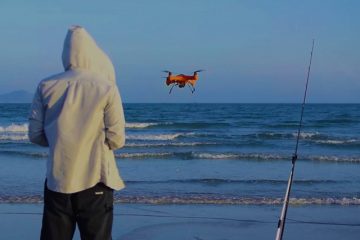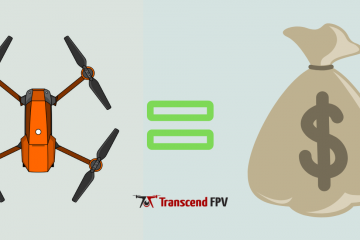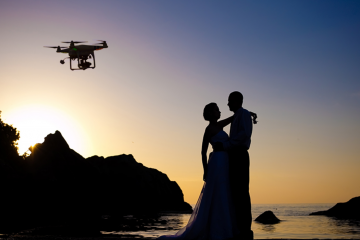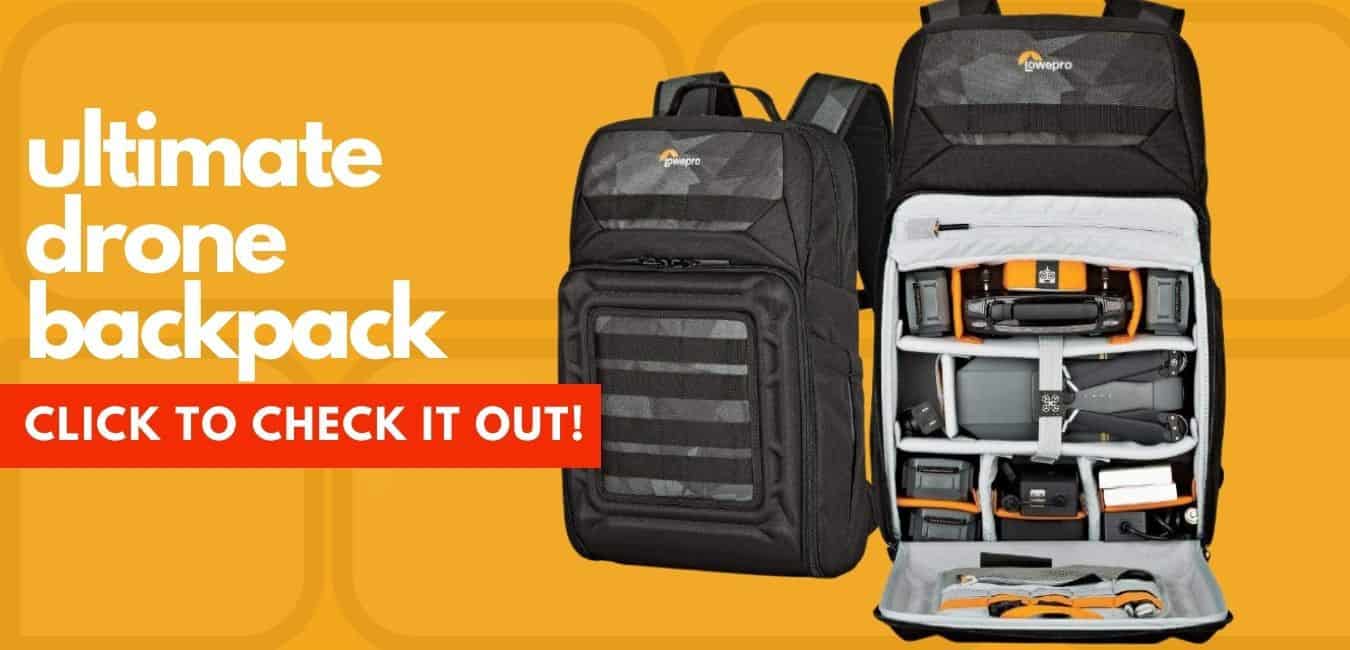Can A Drone Follow A Golf Ball Or Chase An Arrow?

TranscendFPV is a reader supported product and review site. Clicking on links to learn more, or buy products, may earn us money, and support our work. Learn more about the history of TranscendFPV and our passion on our About page.
There is no doubt that drones are fast. One question is, are they quick enough to follow a golf ball or chase after an arrow mid-flight? Over the years, drones have gotten faster and faster thanks to the continued advancements companies have made in increasing their motors’ output.
Small, light-weight FPV drones are capable of following a golf ball or chasing an arrow. FPV drones can reach incredibly high speeds. Modern drones focused on videography do not have strong enough motors and cannot fly fast enough to keep up with these airborne projectiles.
Several factors need to be considered if you are trying to determine if a drone is fast enough to follow fast-moving projectiles. Let’s dive into what you need to know before taking your drone to the range.
[sc name=”aff-snippet” ]
Quick Links
How Fast Are Golf Balls And Arrows?
To calculate both golf balls and arrows’ speed, we need to turn to our good friend Sir Isaac Newton and understand a few laws surrounding motion.
- Newton’s first law of motion deals with inaction and how to maintain movement;
- Newton’s second law details how forces cause an object to speed up or slow down;
- Newton’s third law touches on action and reaction, i.e., what happens when two objects collide.
Unless you use a slow-motion camera, you might think that golf balls and arrows accelerate at the same rate. This is not true. A golf ball accelerates much faster in a shorter time frame due to the ball being static. When a golf ball is hit, the ball itself absorbs some of the golf club’s kinetic energy and ‘bounces’ off the club, gradually losing speed as it flies through the air due to wind resistance. When fired from a bow, an arrow builds up potential energy as the bowstring is pulled back. The arrow then gradually converts that potential energy into kinetic energy as the string is released.
How Fast Is A Golf Ball?
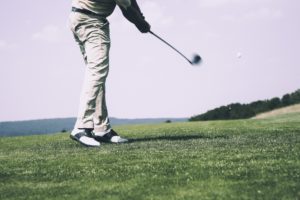
The USGA attempted to answer this question using a swing speed of 109 mph and found that the ball left the tee around 180 mph.
How Fast Is An Arrow?
Depending on the type of bow you use, the speed of the arrow can vary widely. An arrow launched from a recurve bow can reach speeds of up to 150 mph. When firing an arrow from a compound bow, it can reach speeds of up to 200 mph. An average longbow with a 50-pound draw will send an arrow downrange around 115 mph.
How Fast Are Modern Drones?
Now that we know how fast golf balls and arrows are, we need to answer the next question: how fast are modern drones? Will their top speed even come close to following behind these fast-moving projectiles?
FPV Drone Top Speed
On July 13th, 2017, the Drone Racing League set a new Guinness World Record in the classification of “Fastest ground speed by a battery-powered remote-controlled quadcopter.”
Their 1.76 lbs drone, called the DRL Racer X, achieved a top speed of 179.6 mph. This was indeed an astonishing achievement. Their record-breaking attempt was conducted in a field just outside New York City. The drone’s speed was measured as it flew back and forth across a 109-yard demarcated area. The official world-record was judged by the average top speed of each trial. The official record’s final number was 163.5 mph.
DJI Drone Top Speed
DJI is one of the most identifiable names when it comes to drones. Let’s see how their production models compare to custom-built racing drones designed to break world records.
The fastest model drone DJI manufactures is the Mavic 2 Pro. When switching the drone into sport mode, this 1.9 lbs drone can reach a top speed of 44.7 mph. That is quite impressive for a drone that is built with cinematography in mind.
Can A Drone Follow A Golf Ball?
Now that we’ve established what the top speeds are of modern drones, we can see that a production drone isn’t fast enough to follow a golf ball right after it makes contact with a golf club. That being said, an FPV racing drone is fast enough to catch up to the ball mid-flight as it loses speed. In a blog entry posted on MavicPilots.com dated March 9th, 2020, a user named rossmoney posted a video showing off his incredible talent as a drone pilot by following a golf ball from the tee. Rossmoney goes on to explain that it took about ten attempts before he was able to follow the golf ball successfully.
Can A Drone Chase An Arrow?

If you plan on following an arrow mid-flight, your best bet would be to use a recurve bow. A modified FPV drone will be more than capable of chasing after an arrow traveling around 150 mph. If your drone isn’t fast enough, consider swapping out your recurve bow to a longbow and use heavier arrows.
A viral video with over 387,000 views published on August 3rd, 2020, by the YouTube channel Rotor Riot showcases how their FPV pilot Alex Vanover managed to follow an arrow mid-flight.
Drone Use In Professional Golf Tournaments and Archery Competitions
So if drones are fast enough to follow golf balls and arrows, are they used as tools in broadcasting professional sports? Have producers seen the value that these drones have to offer? Could the inclusion of drones enhance the viewer’s experience of the event?
Golf Tournaments
During the 2020 PGA Championship, drones were utilized along with fly cams to bring the viewers closer to the action since no spectators were allowed to attend the event in person due to COVID-19 restrictions. The drones used in filming this event were not small, fast FPV drones. Neither were they consumer-focused recreation drones, like the ones DJI manufactures. They used giant 8-rotor drones capable of carrying large, high-quality video equipment along with transmitters and receivers.
Archery Tournaments
Official rules published by the National Archery in the Schools Program (NASP) stipulate that the use of or possession of drones or other flying devices is prohibited at all NASP events. They rarely grant exceptions to this rule for select media outlets, but they need to apply before the events.
Safety Concerns
Tournaments and Competitions
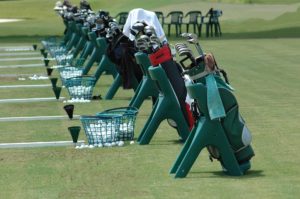
Due to concerns surrounding the safety of the competition’s participants, and in keeping with FAA rules and regulations, commercial drone pilots are not allowed to fly over people who are not involved in the drone’s operation. They aren’t allowed to flow below 400 ft, nor are they allowed to fly over 100 mph. These restrictions do not allow producers to use FPV drones to follow projectiles in close range. In section 336(b), The FFA clearly states that it has the authority under its existing regulations to pursue legal enforcement action against anyone dangerously operating a model aircraft.
Recreational Use
Suppose you aren’t planning on becoming a commercially licensed drone pilot to film officially sanctioned competitions. You could get away with flying a fast FPV drone around your friends while they drive golf balls down range or shoot arrows off into the distance. The main thing to continually keep in mind is that you do it safely.
If you are not an experienced FPV pilot, do not attempt to recreate any of the videos highlighted in this post. These pilots are highly trained and have years of experience. They know precisely how their drones operate and where their limits are. Causing injury to a curious onlooker could result in a massive fine from the FAA or even result in a lawsuit.
Drone flying is supposed to be a fun hobby that everyone can enjoy. Putting yourself or others at risk just isn’t worth it.
Conclusion
Drones are amazing. FPV drones can reach immense speeds and can keep up with even the most experienced golfer or professional archer. They do need every advantage they can get, but in the end, with the proper setup and enough practice, FPV pilots continue to exceed our expectations.
We can’t wait to find out what the next generation of maverick drone pilots decides to tackle next. Maybe we’ll see an FPV drone try and follow one of Space-X’s subsequent rocket launches. Wouldn’t that just be a sight to see?
